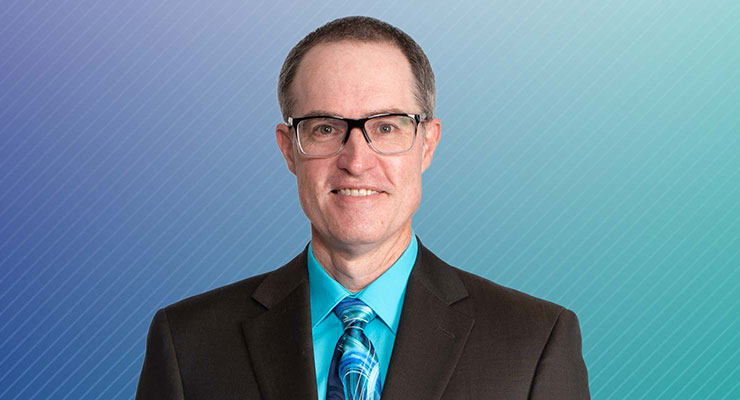Dr. Zacharias on recognizing and treating stroke
- Category: Neurology/Neurosurgery, Primary Care, Awards
- Posted On:
- Written By: Boulder Community Health

Strokes strike nearly 800,000 Americans each year, killing about 135,000 and forever changing the lives of those who survive.
In honor of National Stroke Awareness Month, BCH hosted a free online health lecture: "Recognizing and treating stroke." BCH neurologist Alan Zacharias, MD, presented the lecture and described the causes of stroke, warning signs and ways to lower your risk.
___________________________________________________
Watch: “Recognizing and treating stroke."
__________________________________________________
What is a Stroke?
“A stroke occurs when a blood clot blocks a blood vessel or artery, or when a blood vessel breaks, interrupting blood flow to an area of the brain,” said Dr. Zacharias, who started off the lecture. “This deprives the brain of oxygen and nutrients. Brain cells begin to die within minutes.”
He then went on to explain the two broad categories of stroke: ischemic (brain clot) and hemorrhagic (brain bleed).
“An ischemic stroke is the most common type, responsible for more than 85% of strokes. It occurs when a blockage of an artery cuts off blood flow to a part of the brain,” Dr. Zacharias said.
Ischemic strokes can be caused by:
- Embolism - a blood clot that travels from the heart or blood vessel up to the brain
- Thrombosis - a blood clot that develops in the blood vessels inside the brain
Dr. Zacharias said that these clots may be caused by fatty deposits (plaque) that build up in arteries and cause reduced blood flow.
“The other type of stroke, hemorrhagic, occurs when a blood vessel in your brain leaks or ruptures. Blood spills into or around the brain and creates swelling and pressure. While hemorrhagic stroke is less common, it's more deadly, ” stated Dr. Zacharias.
Warning Signs of a Stroke
Dr. Zacharias said, “There are a number of symptoms for stroke. Any sudden changes can be a stroke.” The most common signs are:
Sudden numbness or weakness of face, arm or leg, especially on one side of the body.
Sudden confusion, trouble speaking or understanding.
Sudden trouble seeing in one or both eyes.
Sudden trouble walking, dizziness, loss of balance or coordination.
Sudden severe headache with no known cause.
One way to help remember the symptoms of stroke and what to do is to learn the acronym B.E.F.A.S.T.:
B - Balance: Watch for sudden loss of balance
E - Eyes: Check for vision loss
F - Face: Look for an uneven smile
A - Arm: Check if one arm is weak
S - Speech: Listen for slurred speech
T - Time: Call 9-1-1 right away
Also, check the time so you’ll know when the first symptoms appeared.
“People sometimes experience a transient ischemic attack, or TIA, which symptoms resemble those found in a stroke but usually last a few minutes. Even if all symptoms quickly resolve, it's still very important that you call 9-1-1 and immediately be evaluated by a qualified physician. A TIA is a warning sign of a possible future stroke and is treated as a neurological emergency,” said Dr. Zacharias.
Time is of the Essence for Treatment
"Never wait to see if symptoms will go away!" Dr. Zacharias warned. “You need to act quickly to save yourself or a loved one from potential disability or death.”
According to Dr. Zacharias, if you suffer an ischemic stroke, doctors work to restore blood flow to your brain with:
- An injection of blood-thinning medication called tissue plasminogen activator (tPA), the gold standard treatment for ischemic stroke.
- Emergency endovascular procedures, which are procedures performed directly inside the blocked blood vessel for those ineligible for tPA treatment. Doctors may insert a catheter through a groin artery and thread it to your brain to deliver tPA directly into the area where the stroke is occurring. Or, doctors may use a catheter to maneuver a device into the blocked blood vessel and pull out the clot.
Other treatments may include surgical procedures that open up a narrowed artery running along the side of your neck to your brain.
For hemorrhagic stroke, treatment involves surgical procedures: open surgery that uses a metal clip to close the bleeding area or endovascular coiling, a minimally invasive treatment that uses a catheter to fill the bleeding area with a platinum-wire coil.
Identifying Your Risk Factors
Dr. Zacharias explained that there are some risk factors for stroke you can't control, but it’s important for you to know them.
He said that genetics contributes to about 50 percent of your stroke risk. “Stroke tends to run in some families. Members of a family might have a genetic tendency for stroke risk factors such as an inherited predisposition for diabetes or high blood pressure.”
Dr. Zacharias noted that some of the most important treatable and modifiable risk factors for stroke are:
- Hypertension (the No. 1 risk factor)
- Diabetes
- Cigarette smoking
- Elevated cholesterol
- Physical inactivity
- Atrial fibrillation, a type of irregular heartbeat
He recommended talking to your health care provider about how to lower your risk for stroke if you have one of the above risk factors.
BCH is Nationally Recognized for Stroke Care
Our outstanding team of physicians, nurses and therapists from across BCH has been nationally recognized for excellent care provided to stroke patients. Learn more.